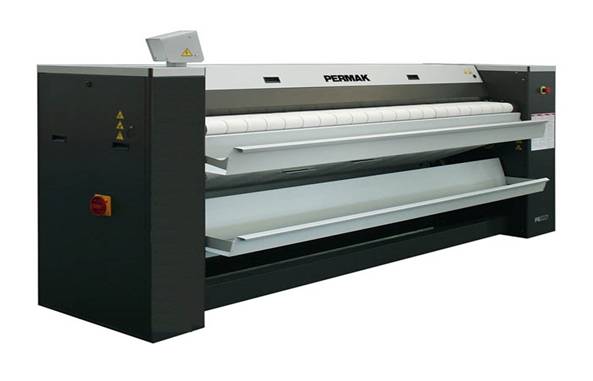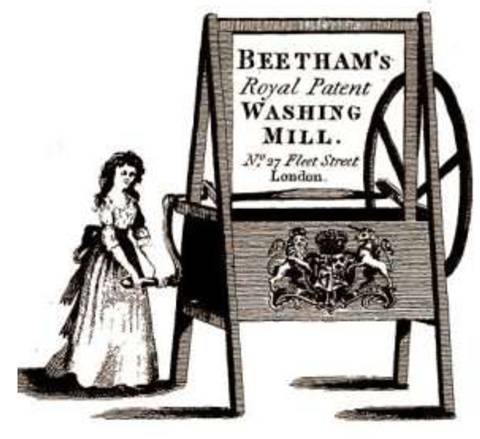
First hand-operated washing machine England (1790)
For thousands of years, people wore animal skins and did not need to wash them With the development of weaving, cloth clothes were washed. Plants such as soap grass and hearth ash were used as cleaning agents. In ash, ashy water removes oily soils as it has caustic potassium carbonate.
The Sumerians made the first soap by heating the ash and sesame oil together. The Hittites wore clean clothes washed before their religious rites. They used to wash clothes with ash, soda and soap.The Egyptian pharaohs also believed that they approached the gods by wearing clean clothes. In the Roman Empire, human urine was used as a cleaning agent in laundries where the rich were washed.
The world's first known washing and spinning machine was patented in England in 1691. In the late 1700s, E. Beetham produced and sold washing machines in England. In the same years, the female inventor, Margaret Colvin, was exhibited in the US, washing machine, in Philadelphia. At that time carpenters made the boilers of washing machines made of wood.
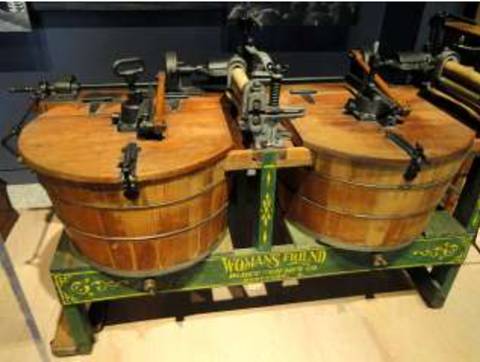
Washing machine with gasoline and double wooden bowl (1890)
After the invention of steam machines, the first industrial washing machines appeared in the UK. The first household electric machines were sold in 1910 in the USA. The movement of the electric motor was transferred to the boiler with chains and sprockets. There was a danger of electric shock as the engine was under the boiler and exposed. The motors were then placed in metal boxes to prevent collisions. However, this time, overheated engines burned, the fan was added to the system to cool the engines.
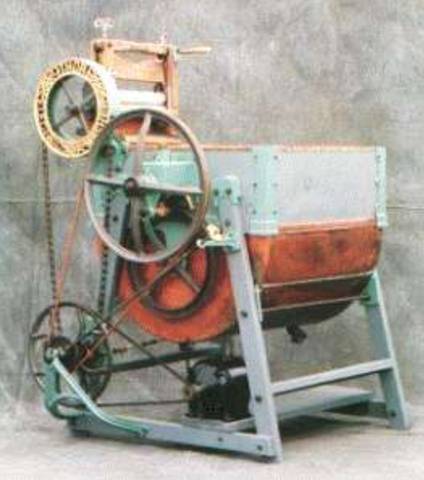
Electric washing machine with wood bowl (early 1900s)
In the washing machines, first copper and then steel boiler were used instead of wooden boilers. White enamel-coated washing machines similar to those of the present day appeared in 1920. In the same year, water heating system was added to washing machines in Canada. The same factories produced gasoline-powered machines for homes without electricity. After a short time, the machines were emptied of dirty water and the machine automatically stopped after the washing was added hours were added. In the first years, the spinning process was done by turning the arm attached to the rollers by hand. The rollers were independent of the machine. The clamping rollers were then connected to an electric or gasoline engine. However, as the number of women with pinched fingers increased, the method of removing excess water by centrifugation was developed. However, when the centrifuge was activated, the machine moved left and right and created danger.
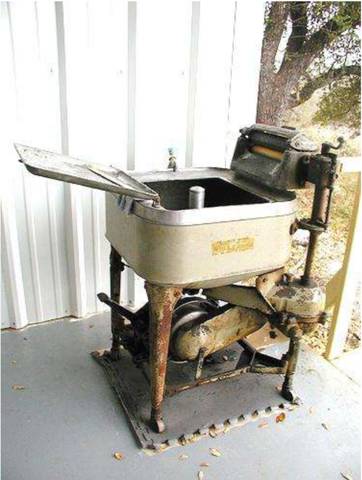
Gasoline washing machine with metal bowl (1930s)
WORLD INDUSTRIAL LAUNDRY MACHINERY MARKET VIEW
Distribution of washing machines according to their monetary values depending on their types:
- 46 percent of professional machines
- 22 percent of Domestic appliances
- 13 percent of major professionals (heavy work types)
- 13 percent of Semi-professional (Household type washing machines)
- 6 percent of Tunnel machines
The annual quantities of the washing machines are also shown in the table below:
Due to the widespread use of commercial laundries and textile leasing, there has been a significant increase in the use of heavy duty, large professional machines and tunnel type washing machines.
On the other hand, restaurants, hairdressers and so on. many small businesses use domestic devices.
With the exception of household laundry and dry cleaning machines, out-of-home laundry creates a worldwide $ 3 billion equipment market.Demand in the industrial laundry equipment market has been sluggish for many years despite the rapid increase of the world population and the rise of national revenues.
PRODUCTION AMOUNT FOR WASHING MACHINES |
WASHING MACHINES ACCORDING TO SPECIES |
GROUPS |
ANNUAL PRODUCTION QUANTITY |
Household Washing Machines |
Front Loading
Top Loading |
250.000
250.000 |
Semi-Professional |
Front Loading
Top Loading |
50.000
220.000 |
Professional |
Front Loading
Top Loading |
135.000
1400 |
Great Professional |
Front Loading |
3000 |
Tunnel Machines |
|
250-300 |
Main commercial trends in the market
Europe is the slowest growing industrial laundry market. Growth is one percent or less for 15 years. On the other hand, per capita industrial laundry equipment expenditure, North America is 2.5 times higher than Europe. 60 percent of the European laundry equipment market is concentrated in the on-site laundries (OPL-On Premises Laundry). Hospitality and hospitality sector is 105 million and health facilities are 100 million dollars. In Europe, there is a transition from construction laundries to commercial laundries using large industrial machinery. In Europe there is also small growth in the health sector and in commercial laundries. Unlike Europe, the American market is a service self-service market. This market has a size of US $ 575 million in Europe and US $ 90 million. 74 percent of equipment sales in North America are for the sector. Cylinder sales in Europe and the United States clearly illustrate this situation. In Europe, one roller iron is sold for every seven washing machines, while in the United States this is 34 to 1. As mentioned above, the equipment market for cleaning out-of-home laundry is $ 3,800 million. However, $ 425 million of this is represented by household washing machines. Other than that, more than 65 manufacturers that manufacture for the equipment market worth $ 3,375 million maintain a fierce competition with more than 80 brands.
More than 41 of these 80 brands addressing the world industrial laundry market are the main brands and the other 40 brands are secondary brands. Approximately 25 of the main brands are international brands with strong presence in more than one geographical region. The remaining 17 are local organizations with significant market share in several countries. 24 of the 41 major brands produce only professional equipment, while 11 are manufacturers of large heavy-duty machines. Six companies operate in both groups. As a result of acquisitions and mergers in the industrial laundry market in recent years, groups representing multiple brands are emerging. For example, the Kannegieser Group, which represents brands such as Kannegieser, Passat, Pharmagg and Powertrans in Europe; Some of these are the Aliance Group, which includes Ajax, Huebsch, Genesys, Speed Queen, Unimac and Cissel, D’Hooge, Ipso, Jensen.
Year 1948...
Turkey's first centrifugal water pump was produced.
Year 1950...
Turkey's first domestic washing machines began to be produced. The Tolon washing machine produced by Tolon Makina, the founder of Kamil Tolon, has achieved great success for many years.
The washing machine, which has achieved great success in those years, is on display in the Rahmi Koç Museum.
Year 1959..
Arçelik produced the first domestic washing machine in our country.
Year..1969-1986 İzmir..
Tolkar Machinery started to produce laundry machines in 1969 in Ýzmir.
Industrial washing, spin-drying and ironing machines were produced by Tolon Makine. Tolon, the first belt-drying ironing machine with both drying and ironing features, was introduced to the sector by Tolon.
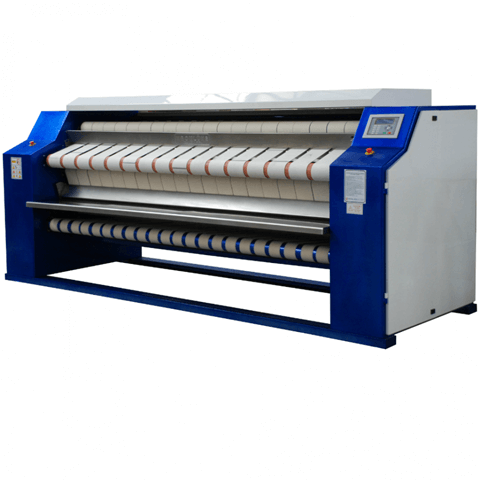
Year 1978..
First direct drive motor and pulley without strap tightening centrifuge machine manufacturing hub in Turkey was made by the basic machine.
Year 2000..
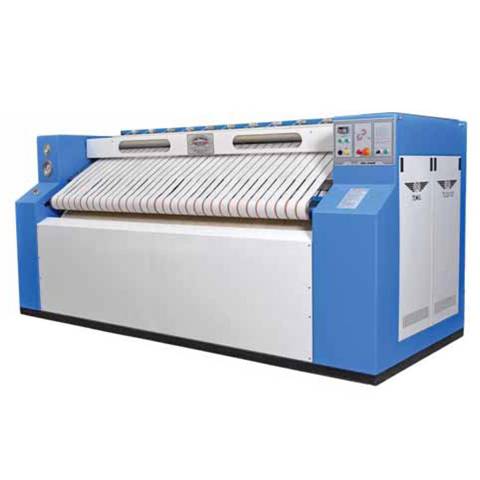
Banded iron cylinder twin-cylinder machine for the first time in Turkey, the basic machine has produced.
Year 2008..
Tolkar Machinery has become the only company in the world that can produce 400 g extrusion machines of any capacity thanks to Smartex and its “Smart Balancing System kat.
Year 2011..
The same company Tolkar Makine produced the first and only gas heated washing machine in the world. Permak, Kromlüks and Aserco, etc. companies that continue their activities in today's laundry machines sector continue their activities.
